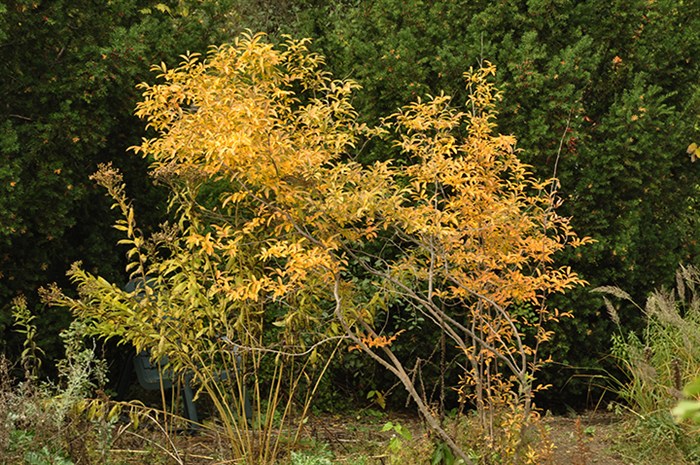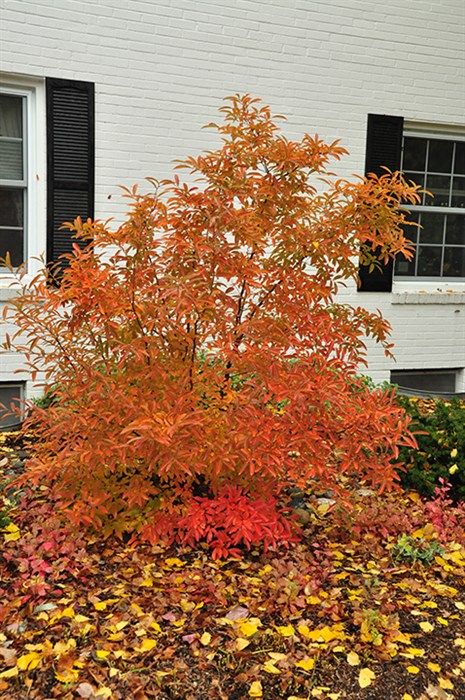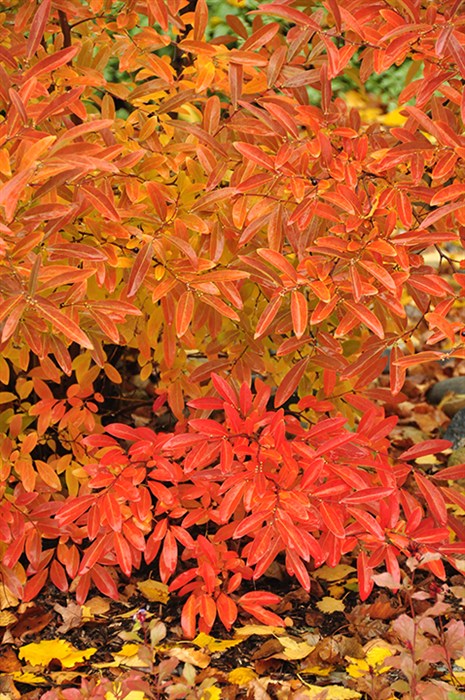Spice bush
Vital statistics
10' tall and may be wider than tall, shrubby but may be
pruned to one or a few trunks to make a graceful small tree.
Grow in shade or sun. Best with steady moisture. Tolerant of wet
soil.
All parts fragrant. Small gray fruits aromatic and useful as a
flavoring in cooking.
North American native Lindera benzoi is hardy to
zone 4 ( zone 3 in protected places. Asian species L.
anugstifolia and L. glauca are hardy to zone 5 and
perhaps to zone 4 -- they are new enough in the trade that only
time and helpful gardeners reporting on the shrubs' performance
will tell on that point.
More:
Spring color
Fall color
Spring color
Spicebushes (Lindera species) bloom yellow in
early spring. In a natural setting in a wooded area a copse of
spicebush may appear as a haze of pale yellow. When the shrubs are
grown in sun, they are thickly clad in more intensely-colored
bloom.
Fall color
Spice bush (Lindera species)
Below: Common spice bush, native to shady moist woods in
eastern North America, Lindera benzoin.

Below: A spicebush native to northeast Asis, Chinese
spicebush, Lindera angustifolia. The leaves blaze orange
in late fall, persist parchment color through winter, and drop in
spring as new leaves emerge.

